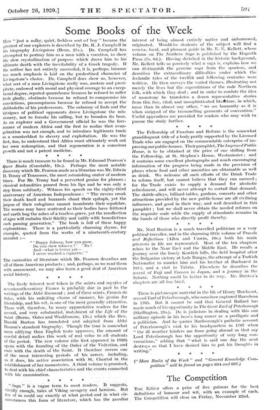." Saga " ii a Yague term . to most
readers. it suggests, _ _ . vividly; .enough, talea. of 'Vildng savagery and heroism.- But . . .
few of irs could Say; exactly; at -What period and in what cir- cumstances this form of literature, which has the peculiar interest of being almost entirely native and Onborrowed, originated. Would-be students of the subject will find a concise, lucid, and pleasant guide in Mr. E. E. Kellett, whose volume Von The Northern Saga is published by the Hogarth Press (7s. 6d.). Having sketched in the historic background, Mr. Kellett tells us precisely what a saga is, explains how we can distinguish the genuine saga from the spurious, and describes the extraordinary difficulties under which the Icelandic tales of the twelfth and following centuries were written. He then surveys the varied themes, illustrating not merely the lives but the superstitions of the rude Northern folk, with which they deal ; and in order to confute the idea
of monotony he translates a dozen representative stories from this free, vital, and unsophisticated liteitture, in which,
more than in almost any other, "we see humanity as it is when stripped of the trammelling garments of convention." Useful appendices are provided for readers who may wish to pursue the study further.


















































 Previous page
Previous page